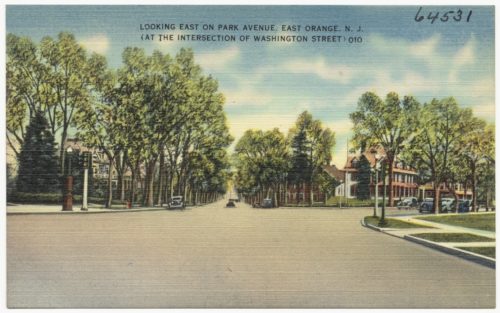East Orange, New Jersey
The regions of East Orange can be traced back to a colony in New Haven, Connecticut. About 30 families from New Haven came by water in 1666 to develop a town situated on the Passaic River. The territory this group arrived on currently encompasses several municipalities, including Newark and the Oranges. That area was on a land grant’s northeast portion, conveyed by England’s King Charles II to the Duke of York (James, his brother). James later conveyed the land to a couple of proprietors – Sir George Carteret and Lord John Berkley. Carteret was the Isle of Jersey’s Royal Governor, and that territory became what we know today as – you guessed it – “New Jersey.”
Initially, East Orange had been part of New York, and was originally called “Newark Mountains.” In the summer of 1780, though, Newark Mountains’ townspeople voted to change the name to just “Orange.” During that time, many people favored secession from the city of Newark. This transpired in 1806, as the territory that encompassed the Oranges became detached. In the spring of 1807, a government had been elected for the first time, but Orange wasn’t incorporated officially as their city until March 1860. Once that happened, the city started fragmenting into many smaller communities, mostly because local disputes ensued due to costs involved with establishing fire, street, and police departments. In early 1861, South Orange became organized. In 1862, Fairmount came into existence (eventually becoming an aspect of West Orange). In 1863, East Orange came about. Finally, West Orange debuted in 1863 (though it included Fairmount). East Orange became reincorporated as its own city in 1899 as per referendum results held a couple of days prior.

East Orange used to be known for shade trees lining residential streets in the city. A lot of those tall trees continue to stand today.
Geography
Based on statistics from the US Census Bureau, East Orange had 10.17 km² (3.93 mi.²) of the total area, which was all land.
Geographically speaking, East Orange had shared borders with Newark’s Essex County municipalities to the South and East, South Orange toward the Southwest, Bloomfield and Glenridge toward the North, and Orange toward the West.
A couple of unincorporated localities, place names, and communities located completely or partially inside the city are Brick Church and Ampere.
Map Of East Orange, NJ
Neighborhoods
The mansion of Ambrose–Ward represents the wealth East Orange used to be renowned for. It was built for a manufacturer of books in 1898. It is currently where New Jersey’s African-American fund is situated.
East Orange happens to be divided up into five different wards. It’s also divided into several different neighborhoods unofficially, most of which have homes and streets that are well maintained.
- Ampere: a train station that is now defunct anchors Ampere. It was developed directly on land that was owned by a company called Orange Waterworks. It came about after a plant owned by the Crocker Wheeler company was constructed. This company spurred development within the area. André-Marie Ampère was who the station happened to be named after. This individual was an electrodynamics pioneer. The station was reconstructed in 1907 as the Renaissance Revival Station. Its boundaries include Bloomfield (North), New York and Lawton Street (East), North Grove St. (West), and 4th Avenue (South).
- Teen Streets (Greenwood): “teen” streets running through Greenwood Avenue are often grouped in with Ampere. The area was disturbed severely when Interstate 280 was constructed and when the Garden State Parkway came into existence. The old DL&W Railroad’s Grove Street station was situated at Main and Grove streets. It bounded the North by Fourth Avenue, towards the East by North 15th St., North Grove St. towards the West, and Essex Lines and New Jersey transit Morris/Eaton Place.
- Presidential Estates: this is a recent designation – streets within the area are named after the original United States presidents. Many large homes are well maintained situated on the streets. They are lined with significantly old but big shade trees all over the neighborhood, which are characteristics of the city’s northern section. It is bounded roughly by Bloomfield toward the North, North Grove St. and the Montclair-Boonton Line toward the East, Garden State Parkway toward the West, and Springdale Avenue toward the South.
- Elmwood: situated in the city’s southeastern area, Elmwood Park has seven different tennis courts along Rhode Island Ave., one swimming pool containing a pool house, one baseball field, one softball field, one walking track, a restored fieldhouse on Oak Street, and a basketball court situated on Oak Street/Elmwood Avenue. The area houses one of the last Carnegie Libraries, which opened up in 1912 (the Elmwood branch of East Orange Public Library).
- Franklin (Doddtown): John Dodd surveyed and founded the Watsessing Plain area. Upsala College’s former campus is situated here. It eventually was reconstructed into the East Orange Campus High School on Prospect Street’s East side, which contains an adjacent subdivision for new housing. It is bounded roughly by Bloomfield toward the North, Park Avenue toward the South, Orange toward the West, and Garden State Parkway toward the East.
Here’s how to get to our office from the East Orange Public Library:
HotHeadTech.com is the best NJ Computer Support service out there.
Read more:


